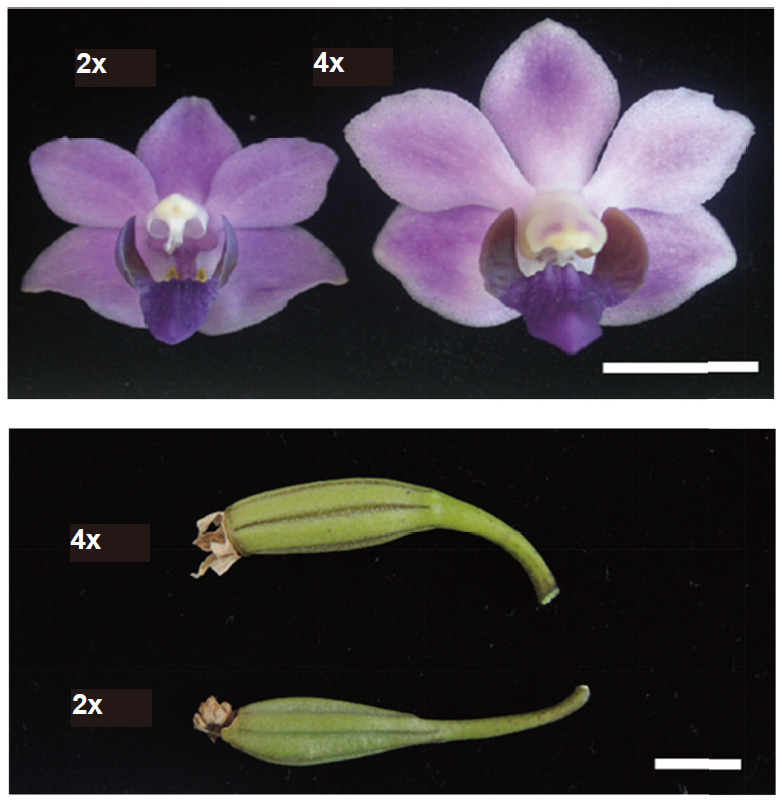All issues

Author:Chin-Yi Tsao, Uei-Chern Chen, Rung-Yi Wu, Tzu-Ying Wu, and Chi-Ni Hsia*
Abstract:
Effects of colchicine concentration and exposure time on polyploidy induction, using 6-wk-old protocorms of Phalaenopsis pulcherrima fma. coerulea, were conducted in this study. Ploidy levels of seedlings derived from colchicine treatments were analyzed by flow cytometry and chromosome counting of root tips. Results showed that the highest survival rates of 85.5–93.3% were found on protocorms exposed with various concentrations of colchicine for 1 d. It was found that survival rate decreased along with colchicine exposure time. In addition, both factors of colchicine concentration and exposure time had significant interaction on survival rate of protocorms. Both 0.1 mM colchicine for 1 d and 2.5 mM colchicine for 8 d had the highest polyploidy induction rates of 43.9% and 46.0%, respectively. However, a better growth of protocorms as well as plantlet development was observed from the former treatment. Comparison on horticultural traits of diploid and tetraploid plants showed that tetraploid with lager flowers and seed capsules, thicker diameter of stalk and ovary, shorter length of leaf and stalk, and thicker texture of petal were observed. Although tetraploid plants show better horticultural traits than that of diploid plants, their hybridization affinity needs more cross investigations for further information.
Key words:Phalaenopsis, Protocorm, Colchicine, Polyploidy, Flow cytometry
Download:![]() PDF Links
PDF Links
- 1. Development of Tractor-Mounted Seedling Transplanter for Sweet Potato
- 2. Synergistic Effect of Additional Gas on the Toxicity of Phosphine to Sitophilus oryzae and Sitophilus zeamais (Coleoptera: Dryophthoridae)
- 3. Effects of Temperature and Solar Radiation on Growth Traits and Plant Elements in Purple Leafy Sweet Potato
 Submit your manuscript
Submit your manuscript
 Guide for authors
Guide for authors